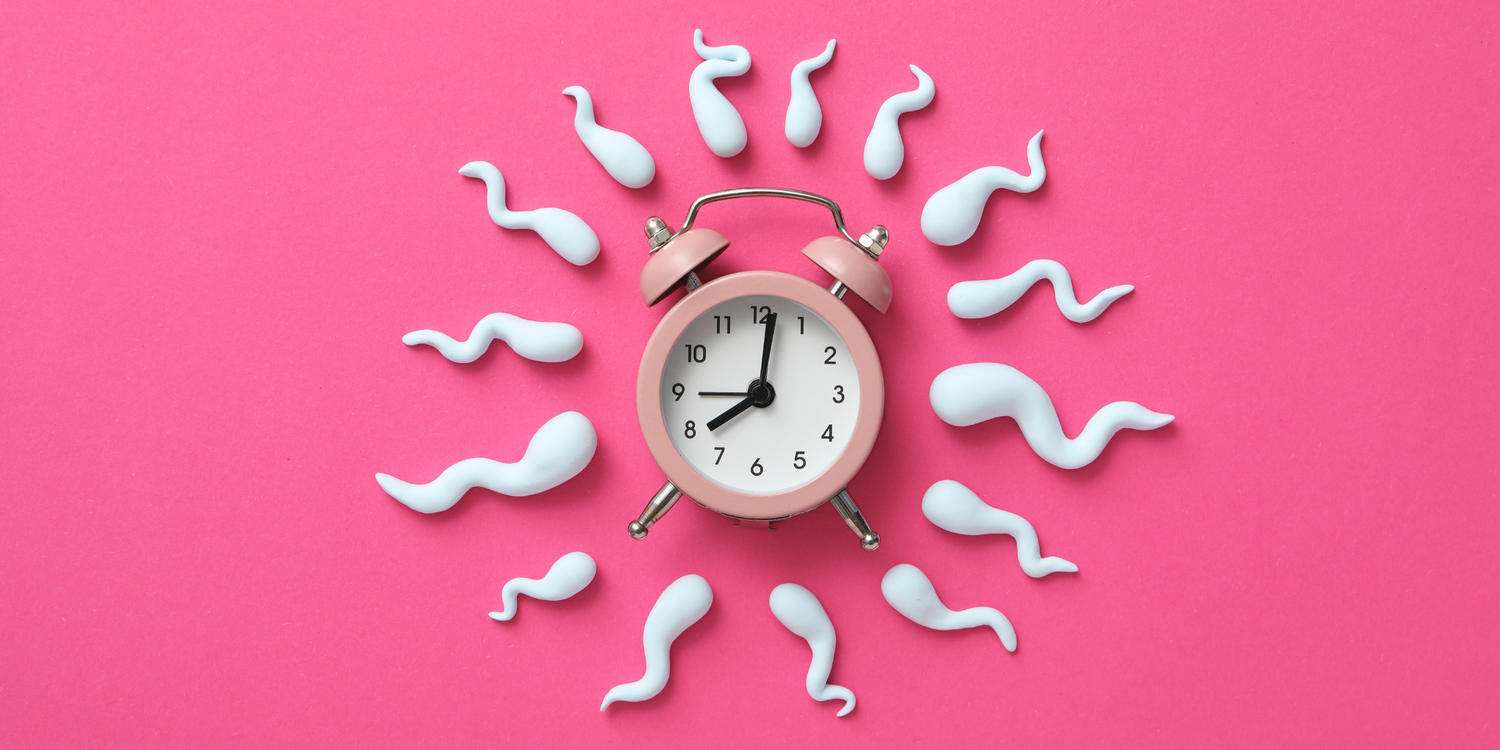Key Takeaways
- Ovulation ist neben der Periode das zweite große Ereignis im weiblichen Zyklus und markiert den Zeitpunkt der höchsten Fruchtbarkeit.
- In diesem Artikel erfährst du, wie du durch die Beobachtung des Zervixschleims und den Einsatz von Ovulationstests deine fruchtbaren Tage bestimmen und somit deine Chancen auf eine Schwangerschaft erhöhen kannst.
- Entdecke, wie Hormone den Zyklus beeinflussen und erhalte praktische Tipps zur Nutzung dieser Methoden, um deine Familienplanung optimal zu unterstützen.
Ovulation, alongside menstruation, is one of the two major "events" in the female cycle, particularly for women with a desire to conceive. The question "When is ovulation?" concerns many, as it marks the time of highest fertility. Cervical mucus and ovulation tests are two reliable methods to identify fertile days and predict ovulation. These natural signs and tools can help women better understand their cycles and increase their chances of pregnancy.
In this article, we will delve into the proper interpretation of cervical mucus and the effective use of ovulation tests. We explain how hormones like LH, FSH, and progesterone influence the cycle and which symptoms can indicate impending ovulation. Additionally, we provide practical tips on how to use these methods in combination with observing your basal body temperature to determine your fertile days and optimize your family planning.
Basics of Cycle Observation
Importance of Ovulation for Fertility
Ovulation is a crucial moment in the female cycle, especially for women wishing to conceive. It marks the time when a mature egg is released from the ovary into the fallopian tube. For pregnancy to occur, the sperm must meet the egg as it travels through the fallopian tube. Fertilization can occur within 24 hours after ovulation. Therefore, the highest chance of pregnancy is when intercourse occurs around the time of ovulation.
Natural Signs of Ovulation
There are several natural signs that can indicate an impending or ongoing ovulation:
Changes in Cervical Mucus: The mucus becomes clearer and thinner compared to other times in the cycle.
Mittelschmerz: One in five women experiences lower abdominal discomfort during ovulation.
Changes in the Cervix: The cervix becomes soft and slightly open.
Benefits of Cycle Observation
Accurate cycle observation offers several advantages:
Supports Family Planning: Depending on the desire, the chance of pregnancy can be intentionally increased.
Early Detection of Cycle Disorders: Potential health issues like irregular periods or PCOS can be more easily identified.
Optimizes Natural Conception: Cycle monitoring can accurately predict the likelihood of successful fertilization.
Cycle-Aware Living: Knowing the different cycle phases allows you to use their strengths optimally in everyday life.
Cycle observation is thus a valuable tool for women to better understand their bodies and actively manage their health.
Proper Interpretation of Cervical Mucus
Characteristics of Cervical Mucus
Cervical mucus is a secretion produced by the glands of the cervix and plays an important role in fertility. Its composition and amount change throughout the menstrual cycle, mainly influenced by the hormones estrogen and progesterone.
At the beginning of the cycle, mucus production is low, and the vagina feels drier. As estrogen levels rise, the cervical mucus becomes more fluid and stretchable. Around ovulation, it has an egg white-like consistency, is clear, and very elastic. This consistency allows sperm to reach the egg more easily.
After ovulation, cervical mucus changes again, becoming thicker, clumpier, and whitish. This change helps seal the cervix and protect against pathogens.
Documenting Observations
Regular observation is essential to accurately interpret cervical mucus. The examination can be done in three ways: feeling, touching, and seeing. Many women can categorize their daily observations using symptothermal family planning.
The following abbreviations can be used for documentation:
t: dry
∅: no mucus
f: moist
S: creamy mucus
S+: stretchable mucus
It is advisable to perform observations several times a day, especially around ovulation. The quality of cervical mucus can be best assessed by wiping the vaginal opening with a finger or directly retrieving the mucus from the cervix.
Common Mistakes in Interpretation
Certain factors can lead to errors in interpreting cervical mucus. Medications, medical conditions, and hygiene products can influence mucus production and consistency. These factors include:
Prescription estrogen supplements
Contraceptives
Overweight
Sexually transmitted infections
Vaginal conditions like bacterial vaginosis and yeast infections
Hormonal disorders
Cervical mucus can also be easily confused with other secretions, such as ejaculate or arousal fluid. It is important to know these differences to ensure accurate interpretation.
In case of uncertainty or changes in cervical mucus, it is advisable to seek medical advice. Accurate interpretation of cervical mucus can provide valuable insights into the cycle and fertility.
Effective Use of Ovulation Tests
Choosing the Right Ovulation Test
Ovulation tests are a reliable tool for determining fertile days when planning for a child. They measure the surge of luteinizing hormone (LH) in the urine, which occurs 24 to 36 hours before ovulation. There are different types of ovulation tests:
Test Sticks: These directly indicate if ovulation is imminent.
Test Computers: These often measure both LH and estrogen in the urine, allowing for a prediction of the fertile window.
Optimal Test Timing in the Cycle
To avoid missing ovulation, it is important to choose the right time to start testing. The following steps can help:
Determine Cycle Length: Count the days from the first day of your period to the day before the next period.
Calculate Test Start: In a 28-day cycle, the first test should be taken no later than 11 days after the start of the last period.
Daily Testing: To avoid missing the LH surge, the test should be performed daily.
The ideal testing time is between 10 AM and 8 PM, with reduced fluid intake two hours before the urine sample.
Handling Unclear Test Results
For unclear or negative test results, there are several possible causes and solutions:
Repeat the Test: Repeat the test the next day at the same time.
Check Test Timing: The LH surge may have been missed. It is recommended to test twice daily.
Consider Influencing Factors: Stress, intense physical activity, or sudden weight changes can affect ovulation.
If results remain negative or ovulation issues are suspected, medical advice should be sought. Possible causes of ovulation problems include hormonal disorders, health issues, or medications.
Conclusion
The proper use of cervical mucus and ovulation tests significantly impacts family planning. These methods allow women to better understand their cycles and determine their fertile days. By combining these natural signs with modern tools, couples can increase their chances of conception.
Ultimately, cycle observation offers more than just support for family planning. It helps women develop a deeper understanding of their bodies and detect potential health issues early. With this knowledge, women can actively contribute to their reproductive health and make informed decisions.
Medically Reviewed
This text was created by medical editors on the basis of specialist medical literature and current studies. Our aim is to work scientifically, identify sources and regularly check that the content is up to date.
References & Literature
- MD Paul, B. Miller, MD Michael, R. Soules (1996) The usefulness of a urinary LH kit for ovulation prediction during menstrual cycles of normal women. Obstetrics Gynecology. Volume 87, Issue 1
- Neena B. Schwartz. (1974). The Role of FSH and LH and of Their Antibodies on Follicle Growth and on Ovulation. Biology of Reproduction, Volume 10, Issue 2, 1 March 1974, Pages 236–272
- Wallwiener, LM., Toth, B. (2014). Follikelreifungsstörung und Corpus-luteum-Insuffizienz. In: Gnoth, C., Mallmann, P. (eds) Perikonzeptionelle Frauenheilkunde. Springer, Berlin, Heidelberg.
You might also be interested in these articles
Kinderwunsch
Ovy App statt klassischer Eisprungrechner: Die fruchtbaren Tage bestimmen3 Min. Lesezeit





